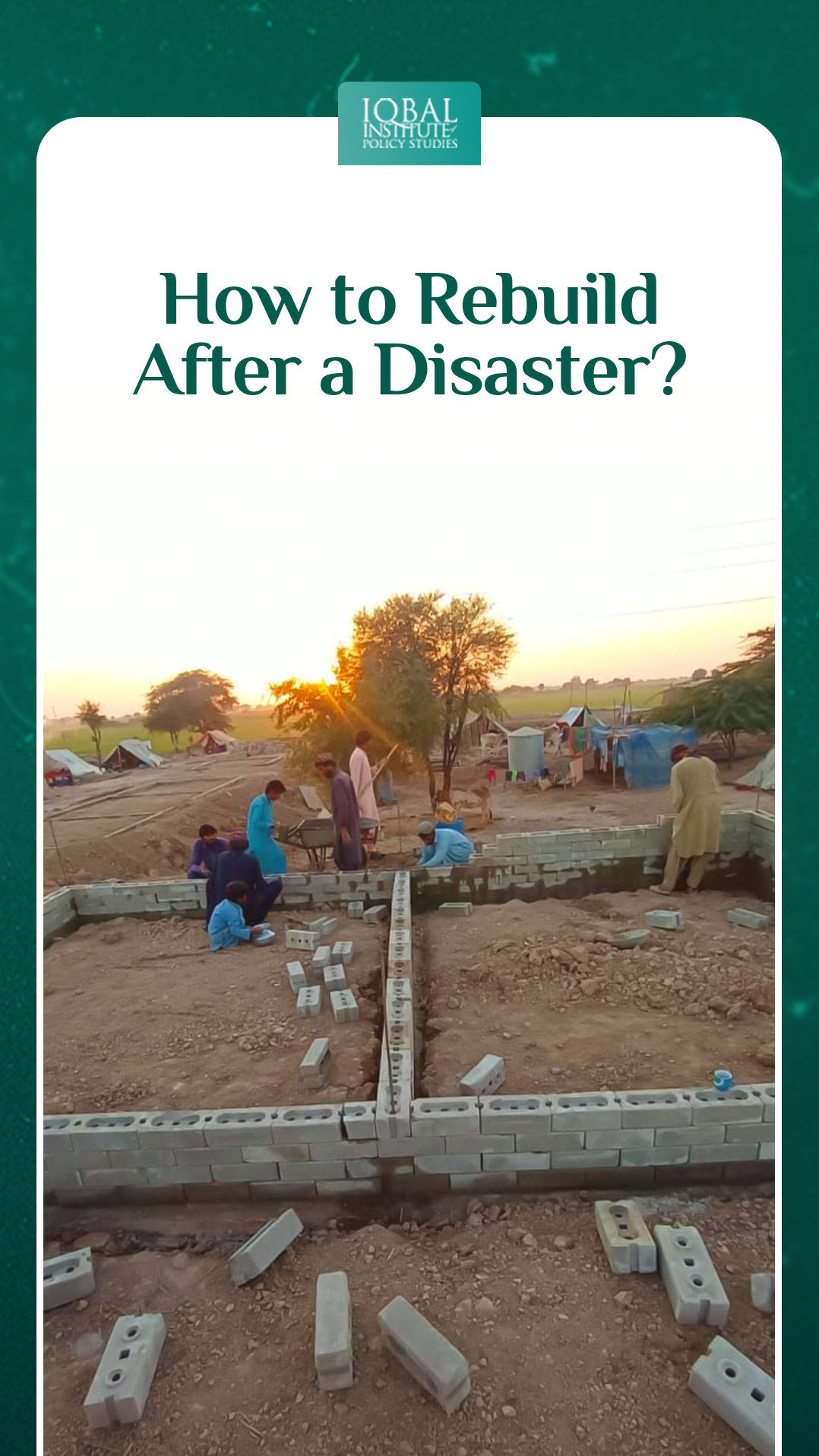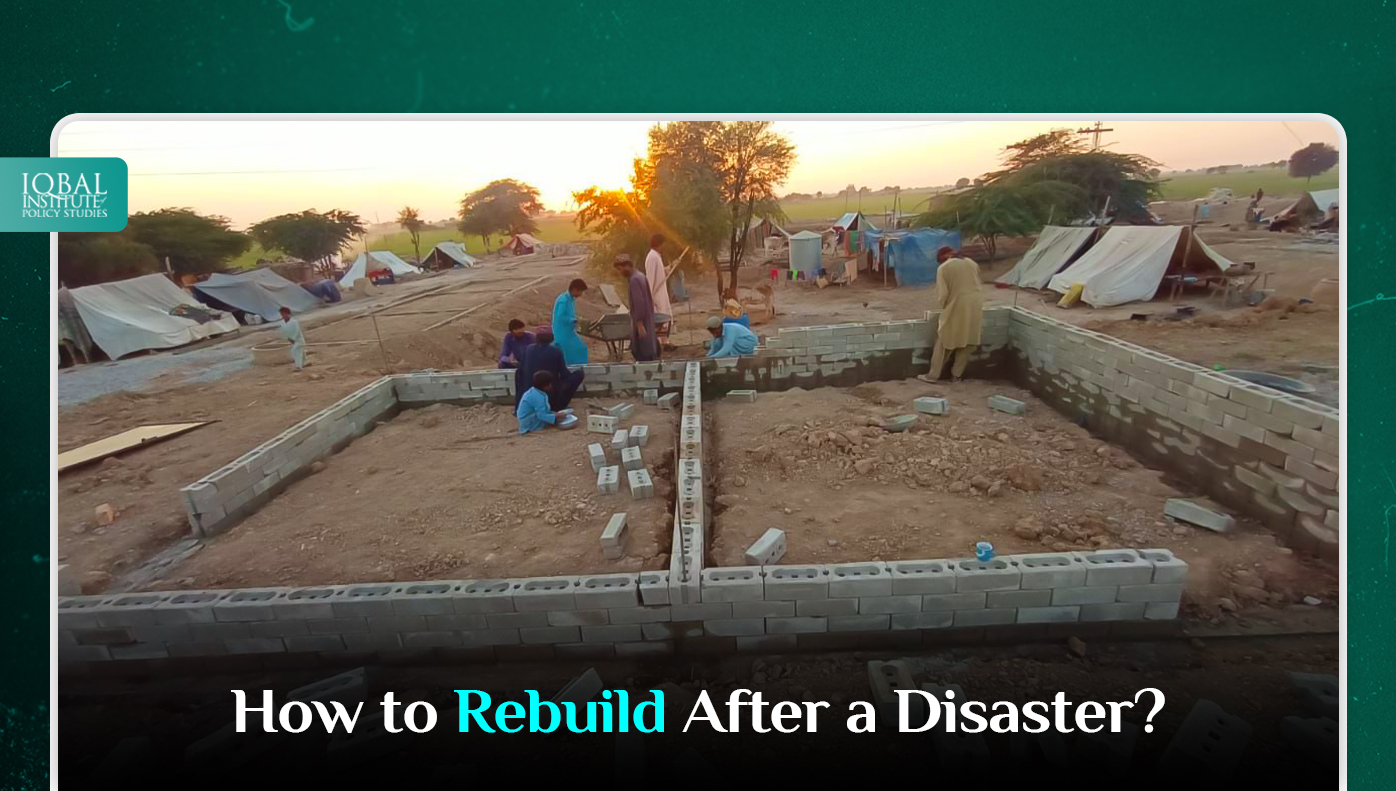There is no universal recovery plan ensuing a disaster. Developing and implementing economic rehabilitation policies and actions after a disaster is a convoluted process. Assets that have been destroyed must be rebuilt and replaced. Lost livelihoods must be resurrected, or new ones must be created. Also, changes in the climatic conditions at the local and regional scales only seem to amplify the frequency, scale, and intensity of these disasters, impacting developing nations more severely than industrialised ones. Despite substantial advances in emergency response, there are significant uncertainties regarding how the built environment will perform in the future. Since each country’s economic reconstruction process is unique in the aftermath of a natural disaster, NGOs and other entities involved in restoration must learn from them as much as possible, analysing previous efforts, successes and failures and entail several distinct and well-coordinated actions that must be well-planned and subject to extensive consultation. Reconstruction following a natural disaster is not only a good opportunity to rebuild the destroyed area into a sustainable community but also a good time to prepare for the next disaster.
Ways to Rebuild Post Disaster
Rapid Damage Assessment
After a disaster strikes, rapid damage assessment and household registration for timely building are crucial. Following the international standard of damage assessment grades give engineers some liberty in determining recovery needs and deciding whether to restore, retrofit or rebuild. Beneficiaries are also free to choose their house designs based on their needs rather than being limited to predetermined ones. This approach, however, takes time; it is flexible on the one hand, but it detains reconstruction on the other. Beneficiary enrollment for housing grant tranche distributions can be made more efficient by enrolling beneficiaries concurrently with damage assessment.
Engaging Civil Society Organisations
A successful strategy is to involve Civil Society Organizations (CSOs) in reconstruction efforts. The CSOs have a thorough understanding of the region, build relationships with the communities, and have a good outreach capacity for social mobilisation, all of which are necessary for the quick mobilisation of resources in post-disaster recovery and reconstruction. They allow communities to work together for collective action and lower reconstruction costs as well. Additionally, they help vulnerable individuals get support from the community for home reconstruction. The involvement of the CSOs also aids homeowners in understanding the technical aspects of reconstruction and the registration procedures.
Encourage Community Support
Mobilising communities by forming community groups can aid during communal reconstruction to rebuild village homes, leading to the collaborative reconstruction of one another’s homes. Collective material acquisition and transportation can significantly reduce construction costs for rural housing reconstruction. It could save up to 20% in some cases (Akbar, 2022).
Efficient Decision-Making
A delayed decision in reconstruction results in a delayed reconstruction. Adopting a real-time, issue-based reporting system can speed up the reconstruction process and allow for quick decisions. For field-level reconstruction, third-party monitoring organisations’ frequent communications with the District Project Implementation Units can be beneficial.
Recognising Populations at Risk
The standards for identifying vulnerable populations should be developed in close consultation with the communities. Social mobilisers and community organisations can carry it out during the damage assessment, which can help speed up the process. Furthermore, communities should be tasked with first rebuilding the homes of vulnerable people. This ensures that the elderly, people with disabilities, single mothers, and children are not left behind. The deferred decision to identify vulnerability criteria can slow support for the most vulnerable groups.
Restoring Livelihoods
After any disaster, it is critical to restore livelihoods. For instance, communities in Pakistan were taught to construct blocks using moulds close to construction sites, greatly reducing the need for transportation and labour (Akbar, 2022). In the aftermath of the Nio Costero floods in northern Peru in 2017, the coordinating efforts of the private sector, public sector, academia, and civil society reactivated the economy of 300 straw handicraft artisans resulting in the birth of Tejiendo Futuro (Weaving the Future) (Iturrizaga, 2019).
Enhancing Social Cohesion
Building homes is only one aspect of reconstruction; it also involves restoring lives, with socially engaged communities at the centre of every effort. For example, after the earthquake, Pakistan’s social structure that had kept villagers together was upended because each family now had to take care of their immediate family. Before the earthquake, the village’s residents looked out for one another as the men moved to the cities to find work (Akbar, 2022). Therefore, it is crucial to implement a system that rewards collective actions to improve social cohesion by building community infrastructures after the needs of vulnerable communities, providing mass social mobilisation for additional support and creating a culture of collective labour sharing.
Using Innovative Technology
Over the past two decades, technology has become increasingly important in the planning, monitoring, and managing of disaster relief efforts (World Economic Forum, 2023). Therefore, various technological tools can help provide additional support to those in need after a disaster strikes. For instance, using social media to disperse information about rescue operations, organise support, and seek volunteers. Using a digital currency like crypto to raise donations when traditional banking fails. Satellite imagery can also help identify the damaged areas and assess the intensity of the damage. Technologies like AI can predict future incidents, build likely outcomes models, monitor earthquake-prone regions, and collect trustworthy datasets. This would support preparedness measures.
Reconstructing with the help of the Right Institutions
The right institutions are what distinguish success from failure in reconstruction. There is intense pressure on governments to start rebuilding and demonstrating results as soon as relief and recovery efforts are finished following a major disaster. However, initiating the reconstruction effort prematurely without the necessary institutions is a grave error. Success depends on having a reconstruction agency that is fully funded, has been granted government authority over procurement, financial management, etc., and is staffed with qualified technical experts. For example, the Indonesian government established such a facility in the wake of the earthquake and tsunami in Aceh, and its staff and leadership were incredibly competent and successful (Jha, 2019).
Preparing Beforehand
Preparedness for a disaster should be multidimensional and involve all stakeholders and communities. Investments in multi-purpose shelters, early warning systems, particularly the last-mile connectivity into communities, and risk-based land-use planning that directs future growth of cities and settlements away from high-risk areas, along with having disaster management funds beforehand not only save lives and avoid losses but also generate enormous economic benefits, which can speed up the rebuilding process. For example, every year, initiatives such as tsunami evacuation drills are held throughout Japan to prepare for tsunamis and raise disaster preparedness awareness (Public Relations Office Government of Japan, 2022). After the 2016 earthquake in Ecuador, the Government decided to involve both the public and private sectors and promote the notion of shared responsibility by developing a national disaster response strategy and a methodology the Government can use to build sectoral disaster risk management agendas, including the different hazards and risks that exist in Ecuador (Rubiano, 2018).
Conclusion
Disasters and aftereffects are never the same and are dealt with differently by various nations. However, lessons can be learned from past experiences for a resilient and effective post-recovery rebuilding process. Reconstruction plans must be national in scope and locally driven while also considering institutional capacity and institutional realities. Strategies for rebuilding after a disaster should also weigh the trade-offs between expediency and fiduciary controls, emergency versus routine procurement, urban versus rural settings, on-budget versus off-budget expenditures, and, most importantly, immediate rebuilding versus long-term planning. With these lessons, countries can prepare themselves for better, rapid, more inclusive and resilient disaster risk management in the future.
This article is written by Haneen Gul. Haneen is a Research Analyst at the Iqbal Institute of Policy Studies (IIPS).
References
Akbar, K. (2022, April 28). Post-disaster Reconstruction: Lessons from Nepal and Pakistan. Retrieved from World Bank Blogs: https://blogs.worldbank.org/endpovertyinsouthasia/post-disaster-reconstruction-lessons-nepal-and-pakistan
Iturrizaga, M. (2019, May 10). Recovering livelihoods after disaster strikes. Retrieved from UNDP: https://www.undp.org/blog/recovering-livelihoods-after-disaster-strikes
Jha, A. (2019, April 16). Rebuilding communities after disasters – four and a half lessons learned. Retrieved from World Bank Blogs: https://blogs.worldbank.org/sustainablecities/rebuilding-communities-after-disasters-four-and-half-lessons-learned
Public Relations Office Government of Japan. (2022, November). Japan’s Initiatives to Promote Tsunami Preparedness. Retrieved from Public Relations Office Government of Japan: https://www.gov-online.go.jp/eng/publicity/book/hlj/html/202211/202211_09_en.html#:~:text=Initiatives%20such%20as%20holding%20tsunami,raise%20awareness%20of%20disaster%20preparedness.
Rubiano, D. (2018, February 19). How to prepare a country to respond to a disaster. Retrieved from World Bank Blogs: https://blogs.worldbank.org/latinamerica/how-prepare-country-respond-disaster
World Economic Forum. (2023, February 18). Türkiye-Syria earthquake: How AI and emerging tech are helping relief efforts. Retrieved from https://www.weforum.org/agenda/2023/02/turkiye-syria-earthquake-ai-emerging-tech-relief-efforts/



Leave a Reply